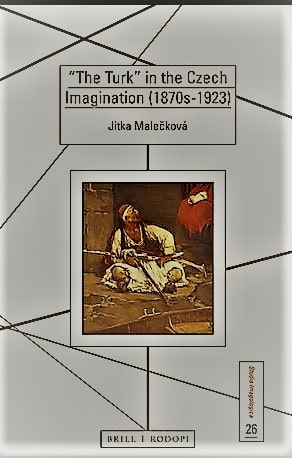
| Book Title | The Turk In The Czech Imagination |
| Book Author | Jitka Malečková |
| Total Pages | 250 |
| Book Views | |
| Language | English |
| Book Download | PDF Direct Download Link |
| Get Hardcover | Click for Hard Similar Copy from Amazon |
The Turk in the Czech imagination
THE TURK IN THE CZECH IMAGINATION
“Do you like the Turks? Do you like those heathen dogs? You don’t, do you?” the Good Soldier Švejk says to Palivec, the innkeeper, in Jaroslav Hašek’s famous novel. Palivec replies: “One customer is as good as another, never mind a Turk. For tradesmen like us politics doesn’t enter into it.
Pay your beer, sit down in my pub and jabber what you like. That’s my principle. It’s all the same to me whether our Ferdinand was done in by a Serb or Turk, Catholic or Moslem, anarchist or Young Czech.”
The views that Švejk and Palivec express here are reflective of the ways many Czechs felt about the Turks in the first decades of the 20th century.
But Švejk’s words are particularly significant because love him or hate him, the amiable, servile “idiot” Švejk is Czech literature’s most emblematic figure and for many the embodiment of the Czech national character.
That Hašek even mentions the Turks in his brilliant anti-war novel and has Švejk voice strong anti-Turkish sentiments therefore demands an explanation. And that is what this book tries to do:
explain why the Turks remained a persistent and often quite prominent image in early-20th-century Czech society, which for generations had had little direct contact with the Ottoman Empire and its inhabitants.
Although it was not only in times and places of conflict that Europeans turned their attention to the Turks, direct contact with the Ottoman Empire naturally increased the level of interest in Turkish themes.
Between the 14th and 17th centuries the battlefields on which European armies clashed with the usually victorious Ottomans moved from Southeastern Europe to the regions controlled by the Italian states, and from there to Central Europe and further East. In the aftermath of these conflicts’ large areas of Southern, Eastern and Central Europe came under Ottoman rule.
The Ottoman army was still able to threaten Vienna in 1683, but Ottoman power then started to recede, and only the Southeast of Europe remained in Ottoman hands. Another important watershed in Europeans’ relations with the Otto- man Empire and their interest in the Middle East was Napoleon’s invasion of Egypt in 1798.
By the early 19th century, the Ottoman army was no longer a threat to the modern states of Europe, and despite the Ottoman Empire’s at- tempts to reform itself, the balance of power between the former rivals shifted to Europe’s advantage. The Ottoman army continued to wage war, but its major
To read more about the The Turk In The Czech Imagination book Click the download button below to get it for free
Report broken link
Support this Website
Click here to join our Telegram group for new Books